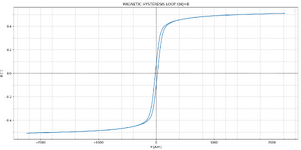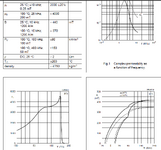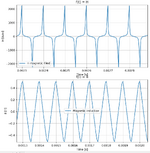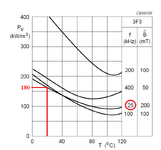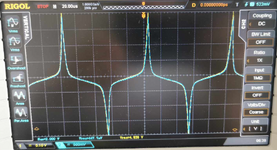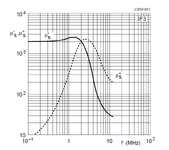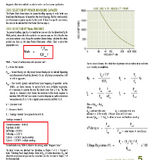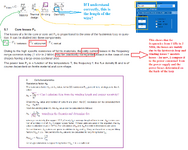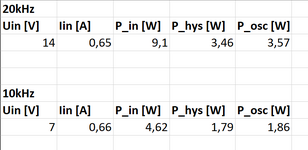Pixelx
Member level 1

Hello, I designed an H-bridge for testing magnetic materials in transformers. Current is measured using a 1:250 transformer with a 22ohm measuring resistor + 470pF in parallel on secondary side. Current transformer time constant 6.53ms. The magnetization error in relation to the main current is 0.25%.
The hysteresis loop I received for 10kHz is for a square signal (voltage) and "triangular" current in the datasheet, induction B = 440mT and current H = 1200A/m are for sine, I received 490mT for 1200A/m
Other data:
Core: E32/16/9-3F3 FERROXCUBE
Al: 2300nH
I obtained hysteresis losses of 1.81W for a non-sinusoidal signal (large number of harmonics)
Hysteresis loss per cycle: 29.31 J/m³
Frequency 10kHz
RMS current 11.74A
PEAK 41.31A
N_prim = 4
N_sec = 20
L_prim = 40 uH
le = 74mm
Ae = 83 mm2
Ve = 6180 mm3
What do you think about these results about Hc and Br, hysteresis losses and B and H, are they correct?
The hysteresis loop I received for 10kHz is for a square signal (voltage) and "triangular" current in the datasheet, induction B = 440mT and current H = 1200A/m are for sine, I received 490mT for 1200A/m
Other data:
Core: E32/16/9-3F3 FERROXCUBE
Al: 2300nH
I obtained hysteresis losses of 1.81W for a non-sinusoidal signal (large number of harmonics)
Hysteresis loss per cycle: 29.31 J/m³
Frequency 10kHz
RMS current 11.74A
PEAK 41.31A
N_prim = 4
N_sec = 20
L_prim = 40 uH
le = 74mm
Ae = 83 mm2
Ve = 6180 mm3
What do you think about these results about Hc and Br, hysteresis losses and B and H, are they correct?
Attachments
Last edited:
